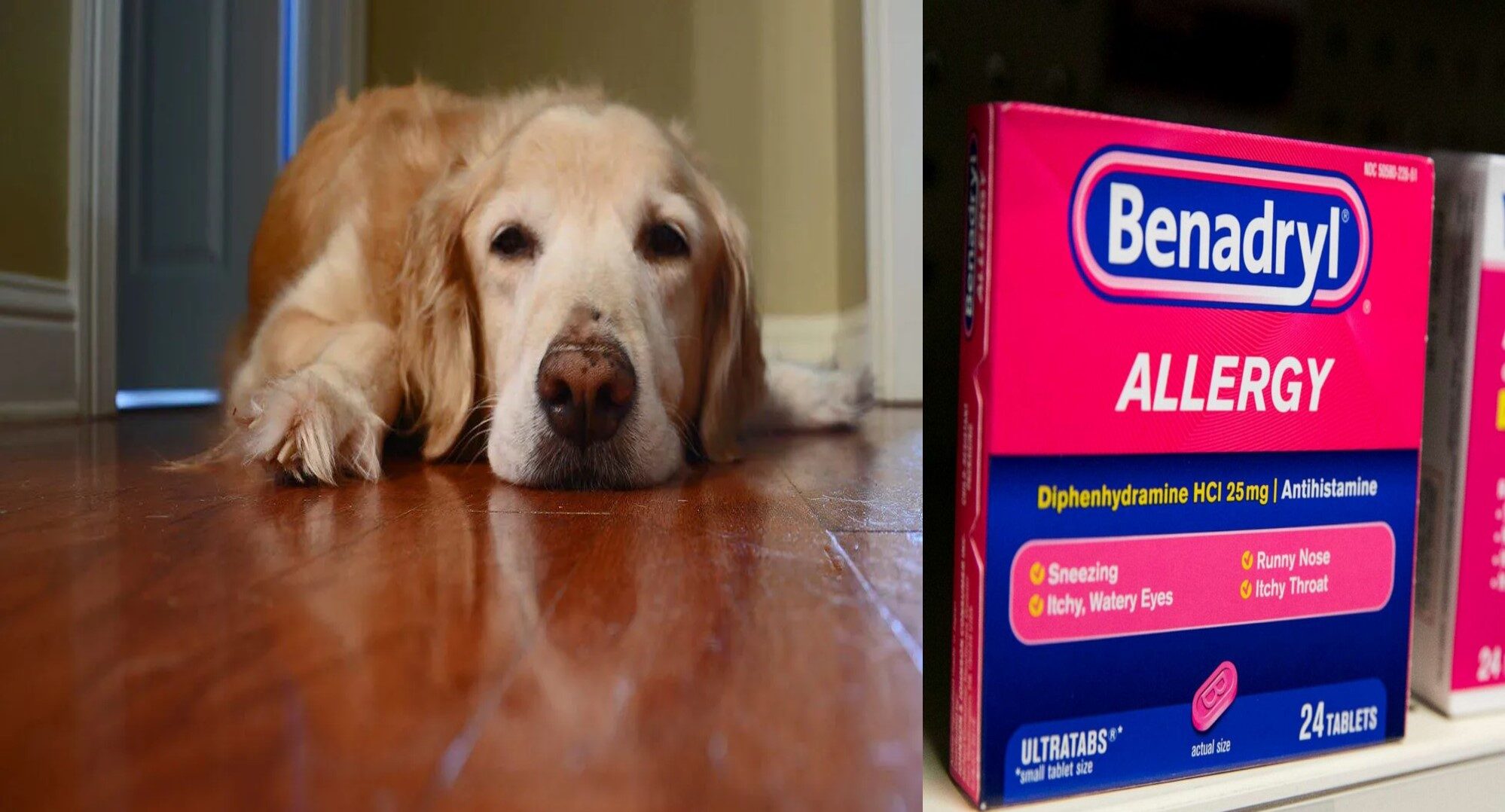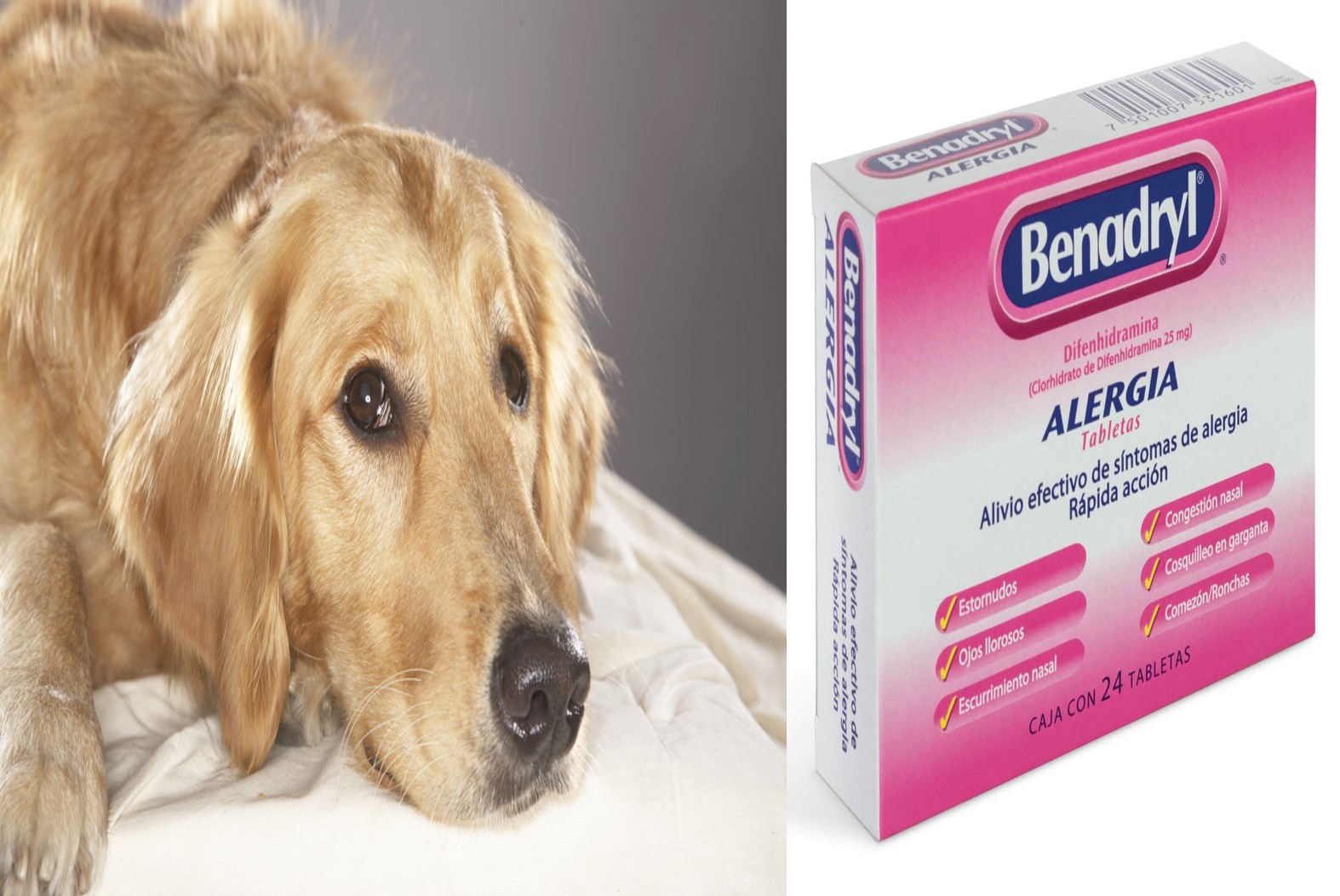Sometimes the owner of a dog may feel the need to self-medicate their pet with medications that are intended for humans and although in most cases, this is not advisable, in the case of Benadryl even veterinarians prescribe it for treat allergies for their acceptable effects. Therefore, in this article you will learn everything about Benadryl for Dogs and its dosage, so I invite you to continue reading.

What does Benadryl for dogs treat?
Benedryl is the trade name of the active ingredient diphenhydramine HCL, which is nothing more than a first generation ethanolamine derivative antihistamine, it is the scientific way of classifying antihistamines that can cross the blood-brain barrier from those that cannot. The ability to cross-link makes them very effective, but it also increases the risk of side effects compared to less effective second-generation antihistamines. Although not yet approved by reputable veterinary medicine bodies, it is considered safe for use in dogs and is commonly used in veterinary practice in the United States.
On the other hand, it can be said that it is a receptor antagonist, which means that the drug works by blocking the receptors that receive histamines in the body. This relieves many of the symptoms associated with allergies, such as itching, sneezing, and hives. The body still produces histamines, but the receptor antagonist blocks the receptors from registering histamines, resulting in an improvement in the canine.
Benadryl for dogs is a remedy for use in animals with mild to moderate allergies. Seasonal allergies, food allergies, environmental allergies, and allergic reactions to snake and insect bites respond to medication in most cases. It is also commonly used against itchy skin in dogs caused by allergies and also reduces many of the other symptoms including: hives, swelling and inflammation. In addition, it can also be used against redness, runny nose, irritated eyes, cough and sneezing.
One of the side effects is drowsiness, which helps calm anxious dogs. The Veterinary Manual or MSD states that diphenhydramine can relieve mild to moderate anxiety symptoms in pets associated with travel. It can also help relieve nausea during car or plane rides. Veterinarians prescribe it for dogs with mast cell tumors to help mitigate the effects of massive histamine release caused by mast cell degranulation.
In addition, it can be noted that this type of medication, which from the beginning was not for animals, but for humans, is also used as an adjuvant therapy for other diseases. That is to say, there are some specialists in the field of canine health who sometimes prescribe diphenhydramine during the treatment of dirofilariosis, since it has properties that help prevent allergic reactions associated with the treatment of this type of disease that can affect the pet.
In what situation can the veterinarian be consulted for its use?
Before getting it, consult your veterinarian about your dog's symptoms. Allergy symptoms like itchy, red eyes are also signs of a more serious condition. In some cases, such as glaucoma, giving your dog this medication can make your dog's condition worse. Red, sticky eyes can be a symptom of allergies or also a sign of an eye disease, such as glaucoma or dry eye, that medication does not help treat. Likewise, itchiness is often associated with allergies and other skin conditions.
Since Benadryl is not effective in treating certain skin conditions, it's always a good idea to consult your veterinarian to make sure you're doing what's best for your dog's health. Your vet may recommend that you take your dog in for a checkup. If you decide against the advice of your veterinarian, or if you administer Benadryl without consulting your veterinarian first, be sure to monitor your dog closely and call your veterinarian if your pet's condition worsens.
Side Consequences of Benadryl for Dogs
There are side effects associated with use that all dog owners should be aware of. Just as people go to their doctors before taking a new medication, you should always consult a specialist before introducing Benadryl to see if you have any potential reactions to your dog's other medications or if it may aggravate an existing condition. If your dog has any of the following conditions, use it only after visiting your veterinarian: angle-closure glaucoma, severe heart failure, prostatic hypertrophy, bladder neck obstruction, pregnancy, among others.
Common side effects associated with use may include: sedation, dry mouth, urinary retention, increased saliva production, increased heart rate, and rapid breathing. Additionally, we can also mention those effects that can be very rare and that it is not common for them to appear, among which we have: diarrhea, vomiting, as well as very serious changes in appetite. Most of these very negative consequences occur within the first hour of exposure, so monitor your dog closely during this time.
Benadryl Recommended Dosage for Dogs
The best way to determine the correct dose is to consult your veterinarian. The Merck recommends administering 2 to 4 mg of the drug per kilogram of body weight two to three times a day. However, this dose may vary depending on your dog's existing medical conditions. Never use extended-release capsules for dogs, as the capsules are absorbed differently in dogs than in humans and may affect your dog's dosage.
They can also break down when chewed and given too many medications at once, putting your dog at risk of overdosing. If you choose to use a liquid Benadryl, it's safer to use a liquid infant formula, since most do not contain alcohol (although they do contain sodium). The dose in the liquid version is different from that of the tablets. Consult your veterinarian for proper dosage and use a syringe to increase measurement accuracy and ease of administration.
Overdose in its use
It's good to always bring up the subject of overdose when it comes to all kinds of medications, especially those that will be administered to your pet. Signs of overdose include central nervous system (CNS) hyperexcitability and may be fatal. Other warning signs to watch out for are: rapid heartbeat, dilated pupils, restlessness, constipation, and seizures. If you think your dog has overdosed on this remedy, contact your specialist immediately for an emergency consultation.
If you liked this article about Benadryl for dogs and want to learn more about other interesting topics, you can check out the following links:
